Last weekend I stayed in – the whole weekend. Having been prevented from returning to my apartment because of storm Ciara I was going to take no chances with storm Dennis. As it turned out Dennis was a bit of a damp squib in the Calder Valley. Being confined to barracks doesn’t suit me well so I planned a number of activities for the following weekend.

Friday night saw me setting off into Leeds to see Opera North’s version of Britten’s Turn of the Screw. I’d searched for recommendation for good food close to the Grand Theatre and came up with Zaap – Thai Street food. It’s ages since I’ve had a good Thai meal so I was looking forward to this. So of course the first question was ‘What shall I wear?’ In the U.S. I loved top dress up for the opera. As a music critic I was able to go to the opera a lot and I always made it feel special by wearing something fun. Many times Sarah would be my Plus One and we had a great evening together.
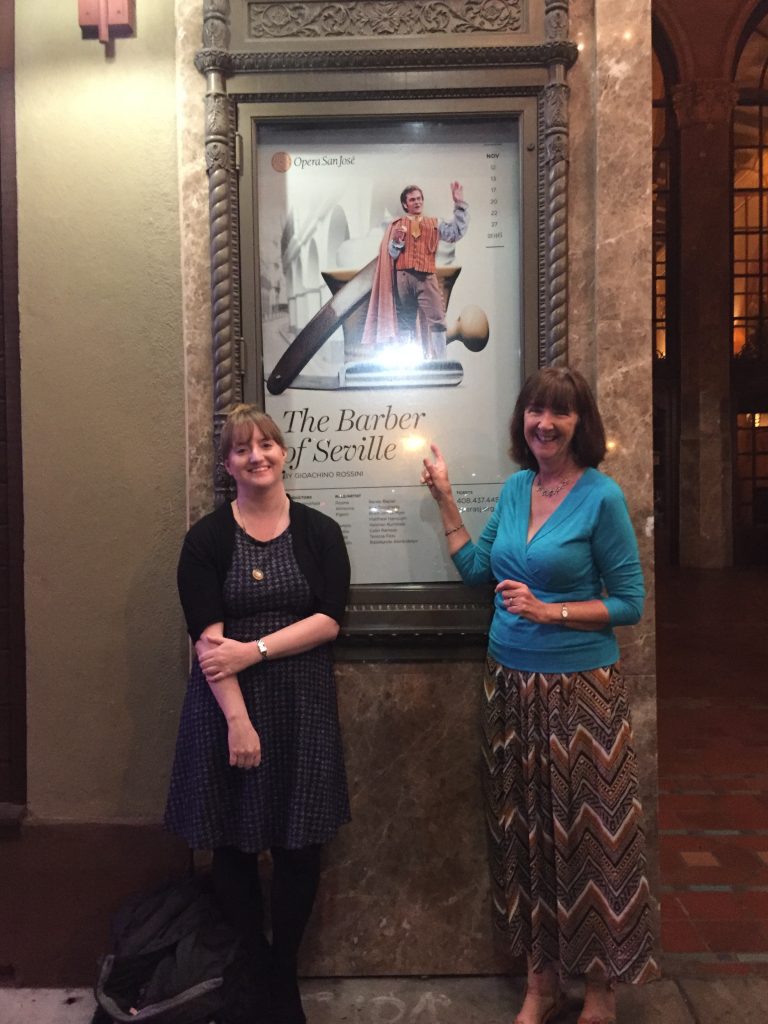
It’s a rather different kettle of fish when I have to walk through the park to the station, wait for a train, then walk to the venue – and then everything in retrograde, usually catching the last train home. By mid afternoon flooding was again threatening Hebden Bridge so this time I set off with minimal overnight supplies, those ‘bare necessities’ in case I got stranded in Leeds. I could see some flooding on the main road – cars ploughing through huge puddles. I really did contemplate wearing my wellies – yes, to the opera! And by the time I was halfway across the park up to my ankles on the flooded footpath I was wishing I had worn them. As I booked my ticket I asked the clerk if he could guarantee that there’d be a train back late in the evening. He ‘believed so.’

Zaap turned out to be a very popular venue. In fact there were 15 people waiting outside to get in at the door. It was packed. I gave myself til 6:20 to get a seat and then go elsewhere, but the line moved quickly and by 6:15 I had a table, right by the window, and so I had a perfect view of people being sprayed by passing cars or having their umbrellas blown inside out. The food arrived quickly and was delicious – and didn’t cost and arm and a leg. The Thai theme was all around me. Posters, writing, lanterns – and some people were eating in converted tuk-tuks. I really enjoyed myself.

Then off to find the theatre which was literally just around the corner, but I still nearly got blown over just getting there. I had an excellent seat. The orchestra were sitting below but in front of the stage which gave me a good view. The lighting and set design were excellent and the voice of the boy that played Miles was ethereal. But the lack of super-titles prevented me following the subtleties of the plot, and at the intermission I heard many people say the same thing. Even when an opera is sung in English it’s very difficult to decipher the words.

Leeds Grand theatre 
At the end of the evening I took a cab back to the station and with less than one minute to spare jumped on the train and was back in my apartment exactly an hour after the show finished.
Saturday.
Another train to Leeds – this time early (well, early for me) on Saturday morning to a Meetup group event at the lovely Tiled Cafe in Leeds Art Gallery. This was a conversation meetup for introverts, where someone generated random conversation questions on an App. Seven people showed up and we spent two hours discussing about a dozen questions. Quite a novel way to spend a Saturday morning.
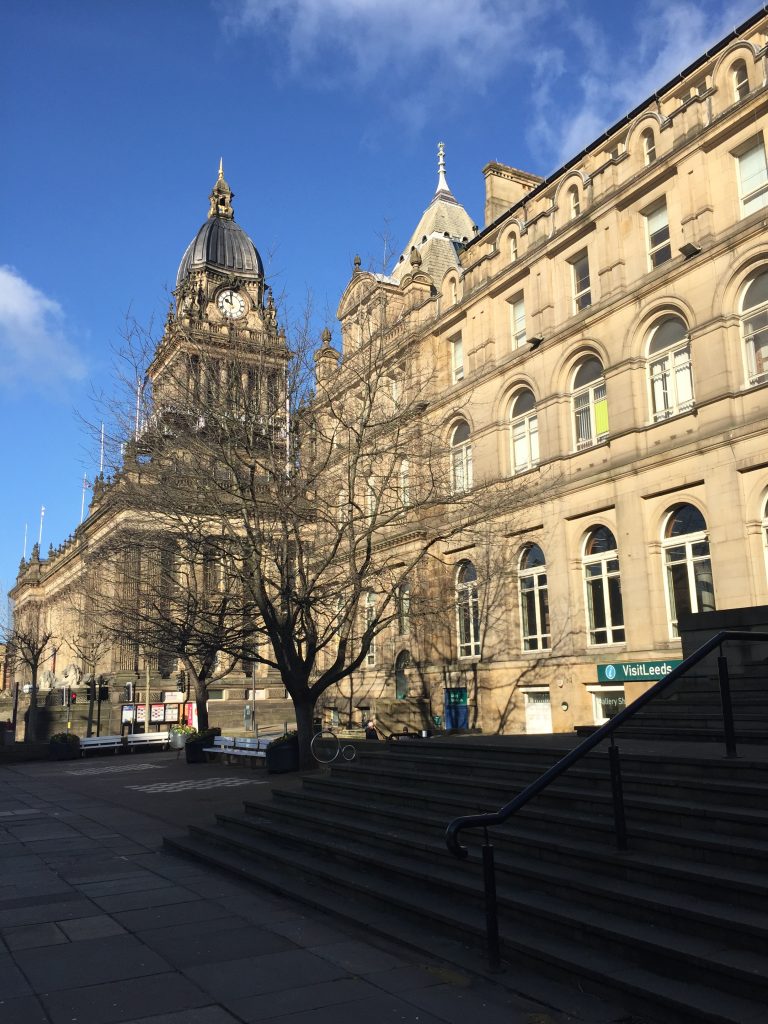
I’d passed The Light on my way to the gallery and decided to explore it on my way back to the station. I couldn’t tell from the outside if it was an office block or a shopping mall. It turned out to be a multi-use venue constructed of glass joining two older buildings. It houses restaurants, coffee bars, a great bagel place (a rarity in England ) and some medical offices! I grabbed a bagel and ate my lunch on the train going back to Hebden.

By 5 o’clock I was back on a train, this time going to Halifax where I was to meet a friend and go to the theatre. We had dinner in Salterhebble first and then drove over to Dean Clough mill, once the largest carpet factory in the world but which now houses restaurants, a theatre, art galleries, apartments and offices. It’s huge – almost like a town to itself. Although it’s fairly central in Halifax we were thrown into confusion by the road to it being closed to traffic. The Diversion sign said ‘Use Shroggs Road.’ That’s all very well if you know where Shroggs Road is! We didn’t but Google maps came to our rescue and we made it to the theatre with three minutes to spare.

The Viaduct Theatre is in the cellar of one of the factory buildings, with exposed stone walls, from which, even in the summer time, water slowly oozes. Blankets are provided for the audience. The play was Quality Street by J. M Barrie and I was fascinated to see this play that I’d never heard of being performed in Halifax, the home of Quality street toffees. A couple of years ago I’d taken a walking tour with David Glover to see the modest home of Mr and Mrs Mackintosh who invented the business. My great aunt, who had worked at Dean Clough factory always brought a tin of Quality Street toffees with her when we met at Christmas but I didn”t know that they were made in Halifax – and still are, right across from the station. Each character was dressed in an outfit the colour of one of the toffee flavours. There were some great hand puppets standing in for children and it was very funny.
Sunday
Someone in my chamber music group was chatting about things to do in Keighley and I mentioned that I wanted to see a cross stitch exhibition in Towneley Hall in Burnley. I’d figured out that it would be fairly easy to get to by public transport but then someone else joined the conversation suggested we go together by car. I’d been keeping my fingers crossed that bad weather wouldn’t prevent us from going and Sunday morning dawned sunny with blue sky, something I haven’t seen in weeks. But minutes later it was raining cats and dogs – and that was the order of the day.

Townleley Hall 
First snowdrops
We set off at 12.30 and it only took 35 minutes , driving through Portsmouth, to the park in which the hall is situated. I’d vague memories of coming here with my mother-in-law and our children when we were on a holiday in England years ago. The hall dates from the 17th century and it is famous for its textile collection. The special exhibition I wanted to see was about cross stitch. I’ve been working on several cross stitch panels myself recently so I thought I might glean some new ideas from the show.
The cross stitch panels were highly creative and some of the descriptions were somewhat disparaging about the more traditional designs of pretty landscapes and animals. I’ve done my fair share of those, the last one being kits that I’d purchased in Oban in 2018. But soon after I’d finished those I happened to see some cross stitch fabric for sale by the metre in Huddersfield market.
I had the idea that I could paint my own design on the fabric and then stitch it. I tried this method but the paint bled too randomly, so then I drew my own design on graph paper and then made that. I’ve completed about 20 panels this way but I’m not yet sure how/if to combine them.

Croos stitch! 


Beside the living rooms of the hall, the formals dining room, kitchens, grand living room there were all sorts of random items that had been collected by enterprising Victorian explorers and donated to the hall – including taxidermy animals, my favourite being a cat, curled up and asleep, and an Egpytian mummy case. The wealthy owners of the hall often sponsored archaeological digs and were given items that had been discovered.

After a pause for tea and scones, in the quintessential tea room, I took a brisk walk around the parkland with its views towards Pendle Hill. When I got home I found the holiday journal report of my family’s previous visit to the hall – in 1996.
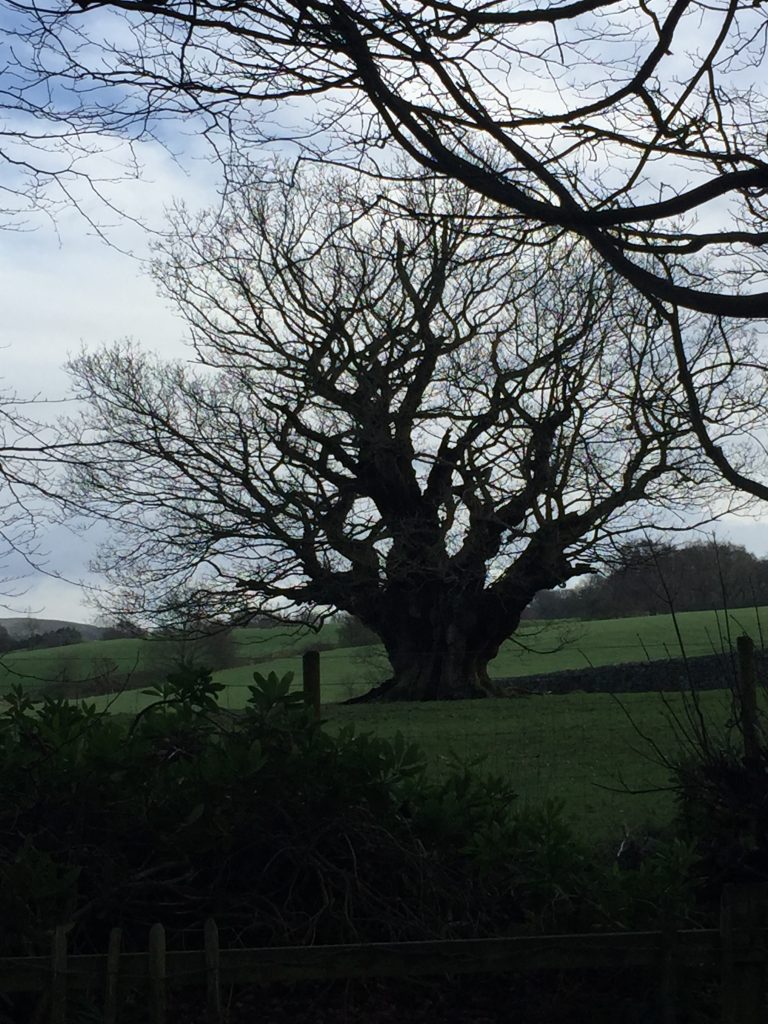
Burnley’s oldest tree – 400 years 

Pendel Hill 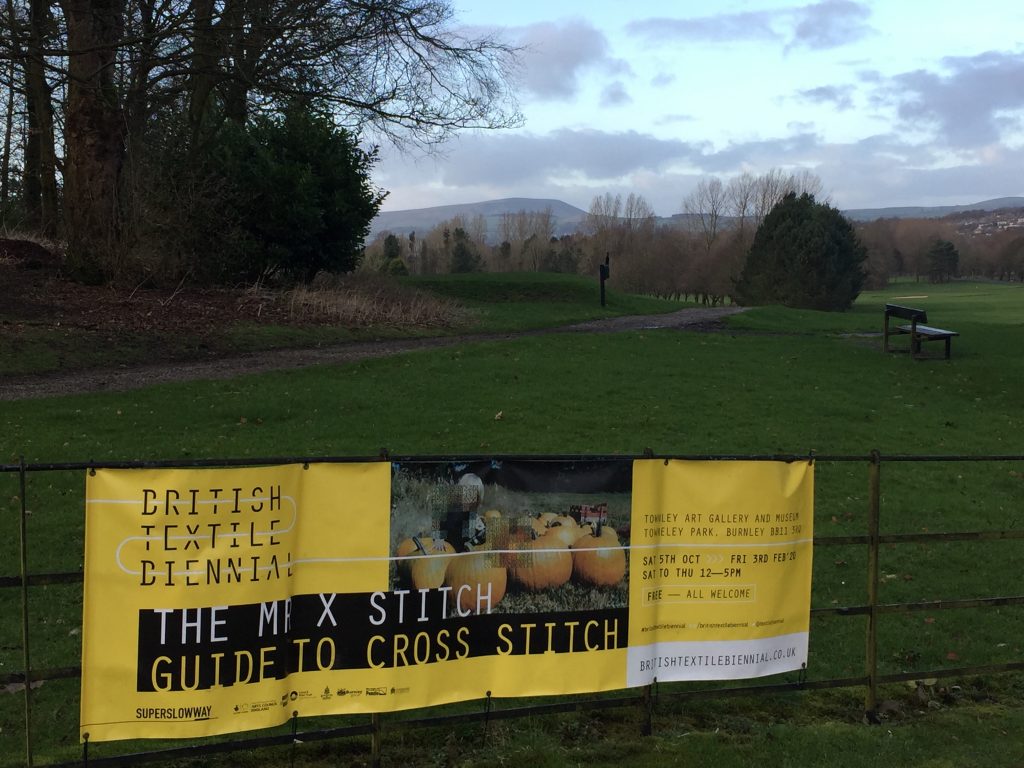
The highlight of the evening was Episode one of the new series of Last Tango in Halifax. I was rather disappointed to see that the character played by Sarah Lancashire is no longer the headmistress of the same school as in the last series, because the school scenes were all filmed in my all high school – Bolton School.

Monday
Woke up to snow for the first time this year. By the looks of it there was a snow covering of several inches but it was now raining hard so I though the snow would have gone by the time I left at 10 ‘clock. But that was not to be and I found my way trudging through a very slippery mixture of snow and water. Even in the centre of Bradford there were great chunks of snow in the streets that had fallen from the roofs of buildings and bus shelters.
I was heading for a Heritage Tour of St George’s Hall, and if I had not already booked and paid I probably wouldn’t have ventured out. As it was 8 people showed up for the 90 minute tour and it was definitely well worth braving the weather. our guide was excellent and she brought the history fo this, the first civic building to be built in Bradford to life. Conceived in 1849 by Samuel Smith who wanted to help provide a better life for the worsted textile workers who spend their Saturday evenings getting drunk in the town he raise 16,000 pounds to build a place of entertainment. The classes were still segregated, each class of person having their own entrances and staircases. The well dressed families arrives it coaches on the elaborate one way system and sat, of course, in the ‘dress’ circle. The lower classes weren’t even provided with a bathroom. Over the next 150 or so years the building saw many changes, including a 10 million pound restoration recently. The Halle orchestra was one of the early groups that performed, and still does. It stood derelict for many years, major stagnant sewage problems beneath the building, but then it was turned into a cinema with a couple of man going out into the streets of Bradford to record everyday life with the hopes that the people in those early movies would come to watch themselves on the big screen. Subsequently it became a major venue for rock bands on tour. A couple of people on our tour had seen Queen there, a docent had met David Bowie after his performance and another man had watched Keith Emerson run up to the organ at the back of the stage and play the Bach Toccata and Fugue. Sadly the organ hasn’t been working since 2009 and would cost an astronomical amount to return to playing condition. It was fun to see the signed posters of many famous people who have performed there – including Charles Dickens who read from A Christmas Carol – with no mic. Sir Charles Halle said that the hall had the best acoustics in the whole of Europe.

David Hockney sold programs at St George’s Hall for three years and would sit and draw the artists 
On stage – where I saw Sandi Toksvig last month
I had lunch in cafe with its wonderful crazy roof before heading to Waterstones bookshop in ‘Little Germany.’ I needed to get back for my creative writing class. By the time I got back to Hebden Bridge all the snow had disappeared but the two possible venues for our class were both flooded so it had to be cancelled.


















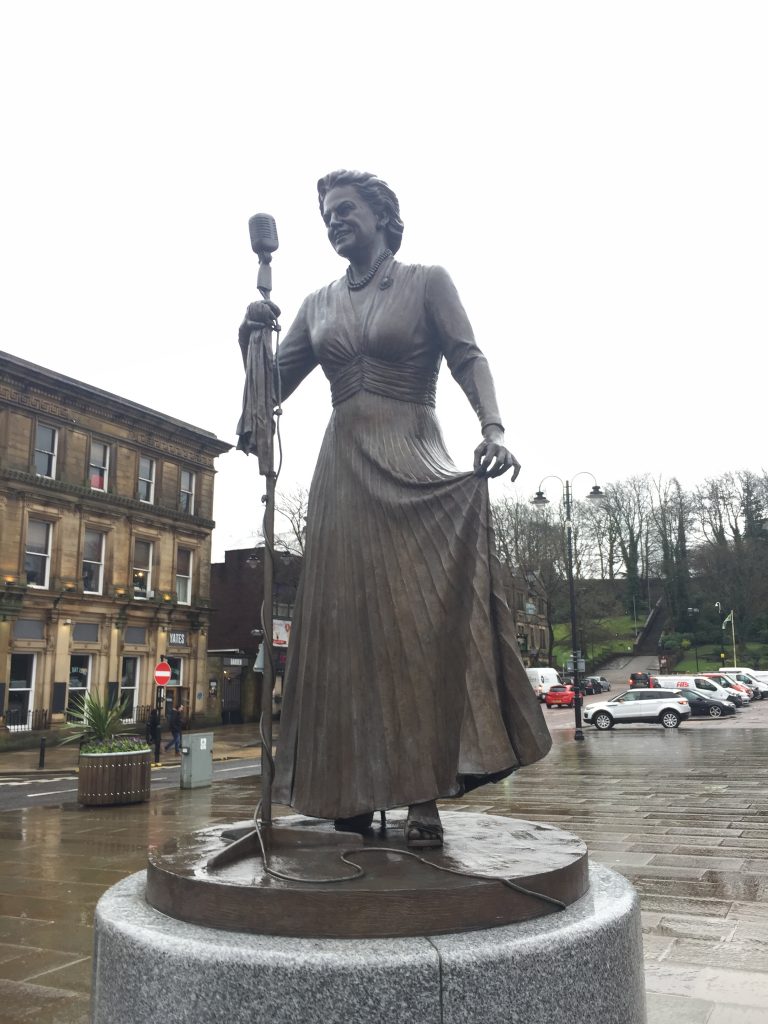




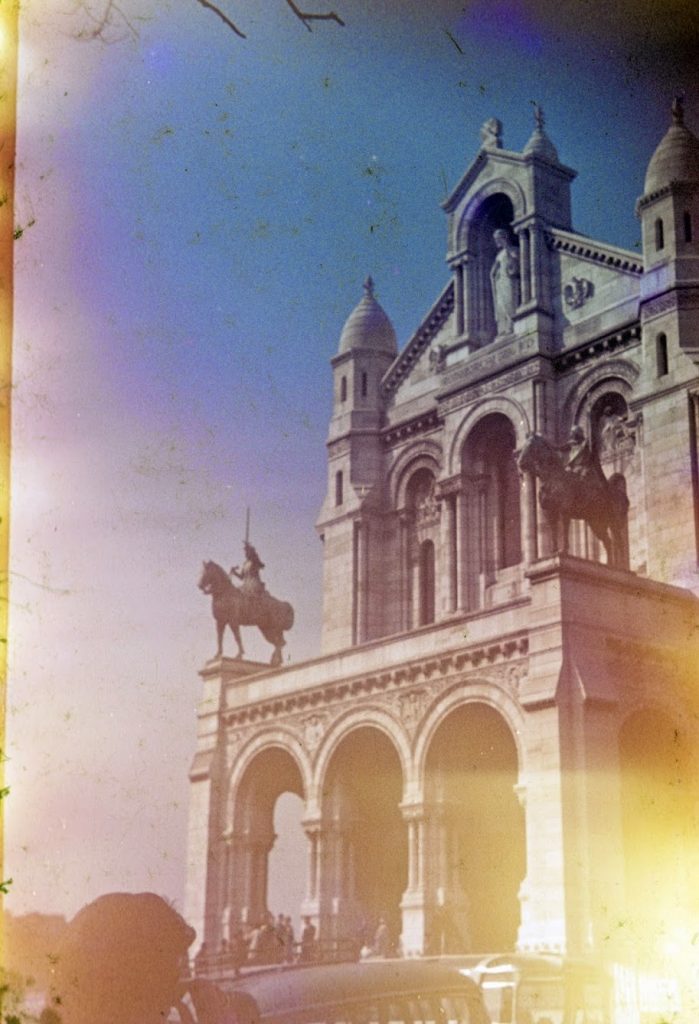





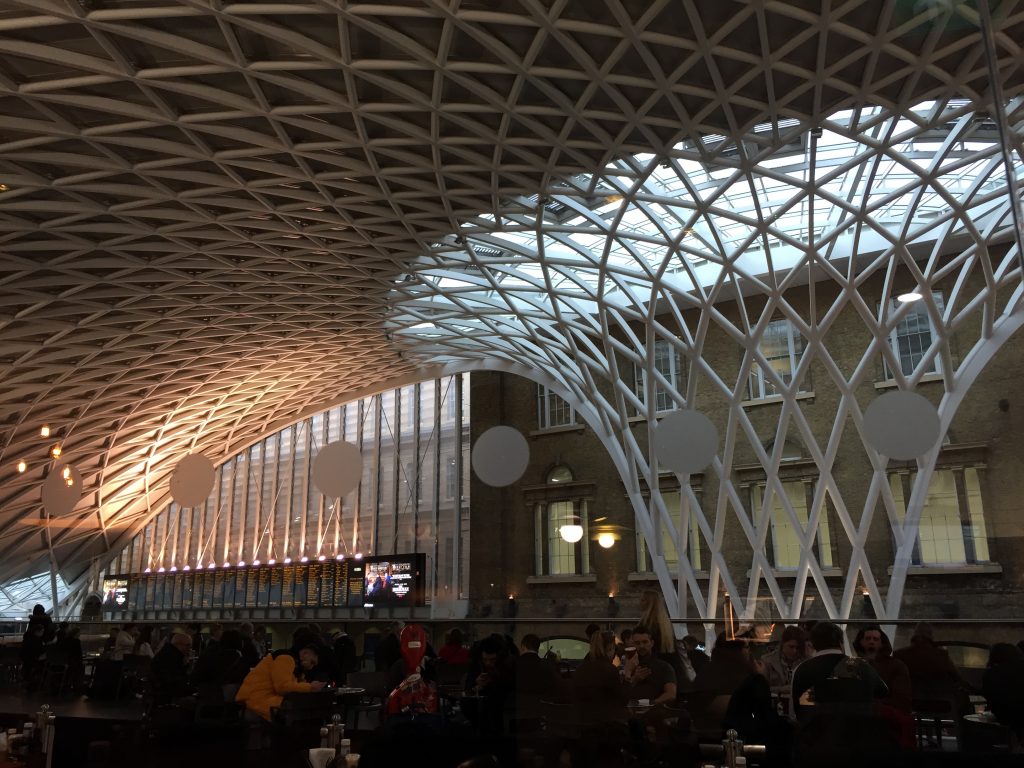




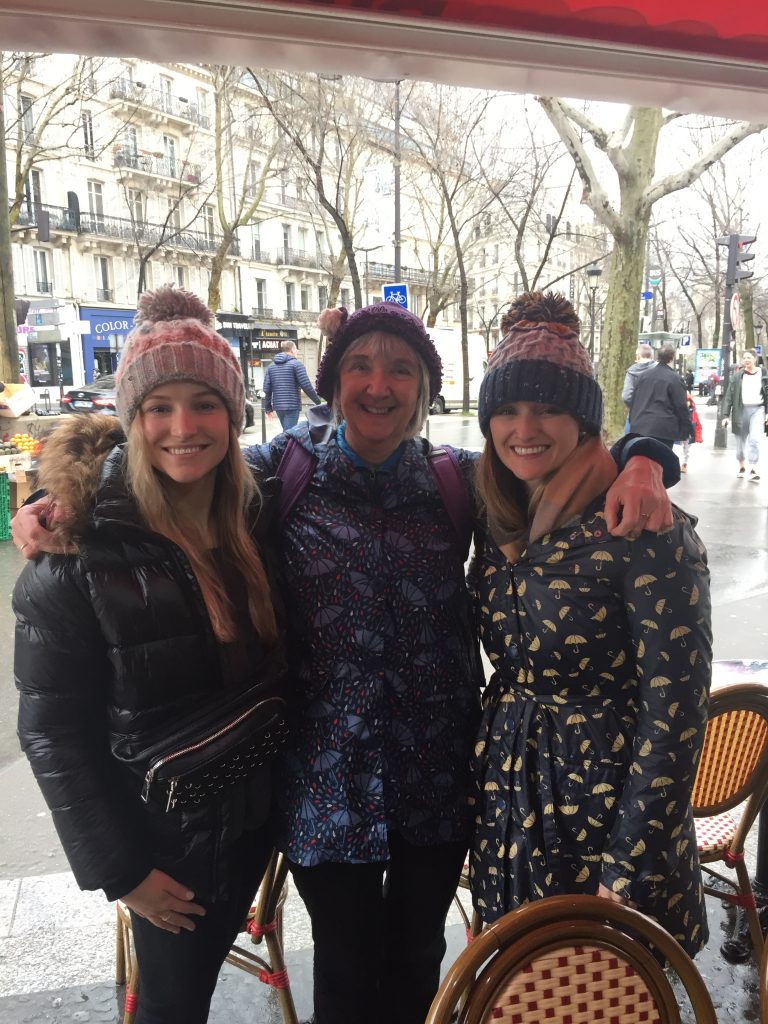
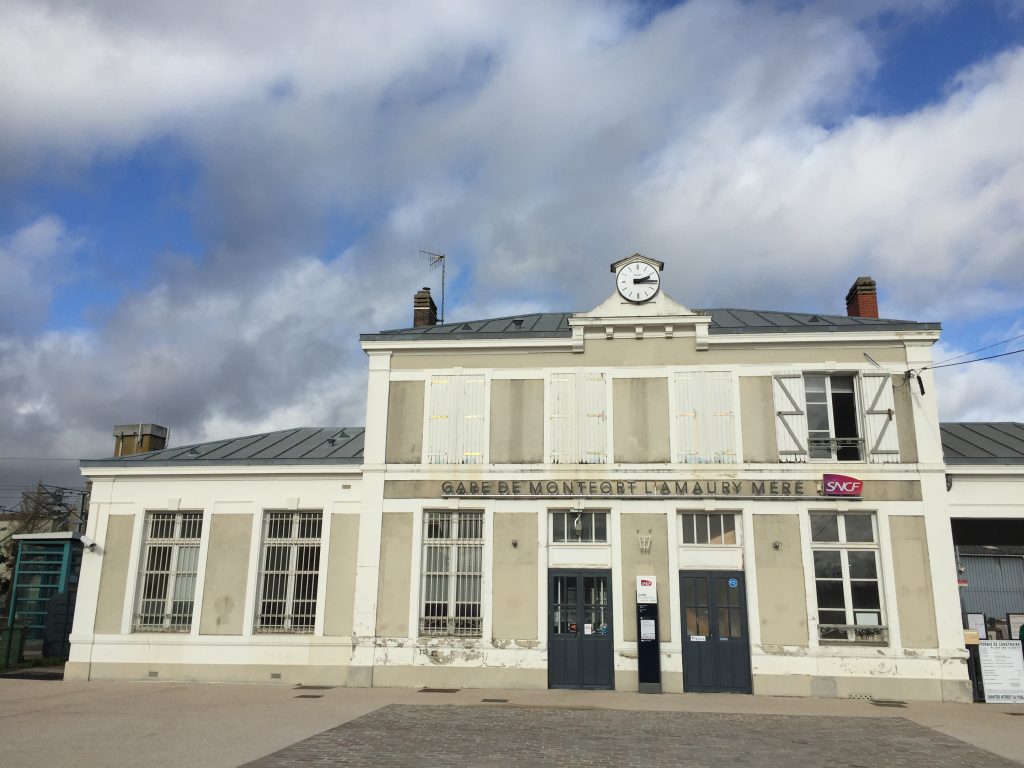



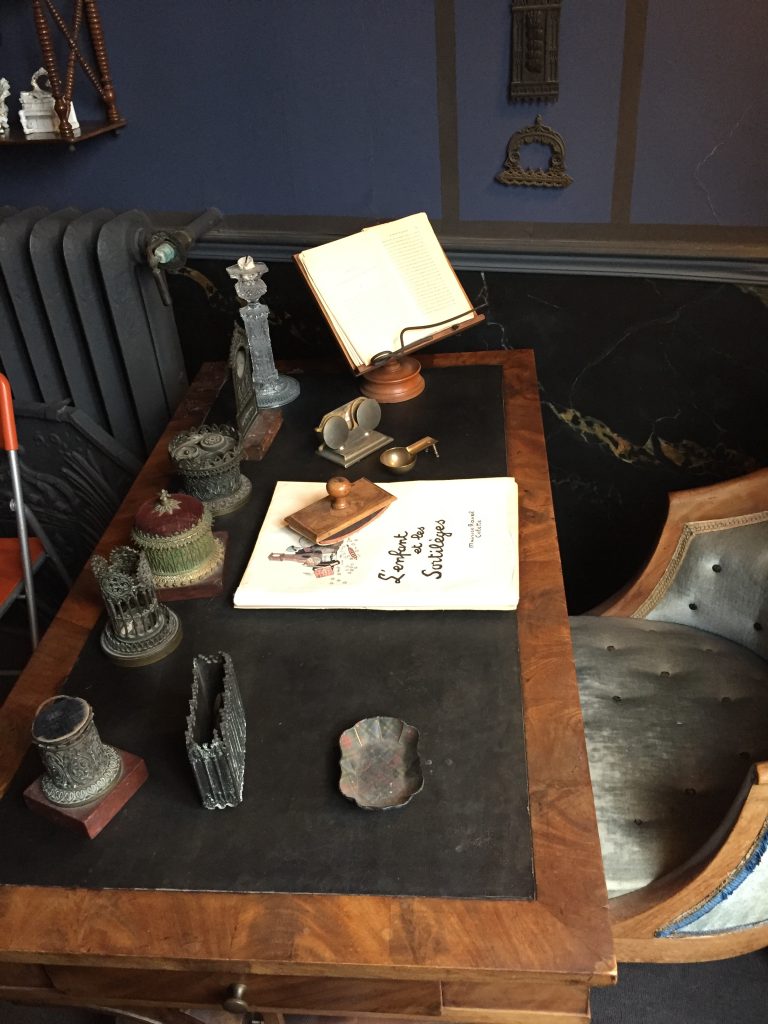









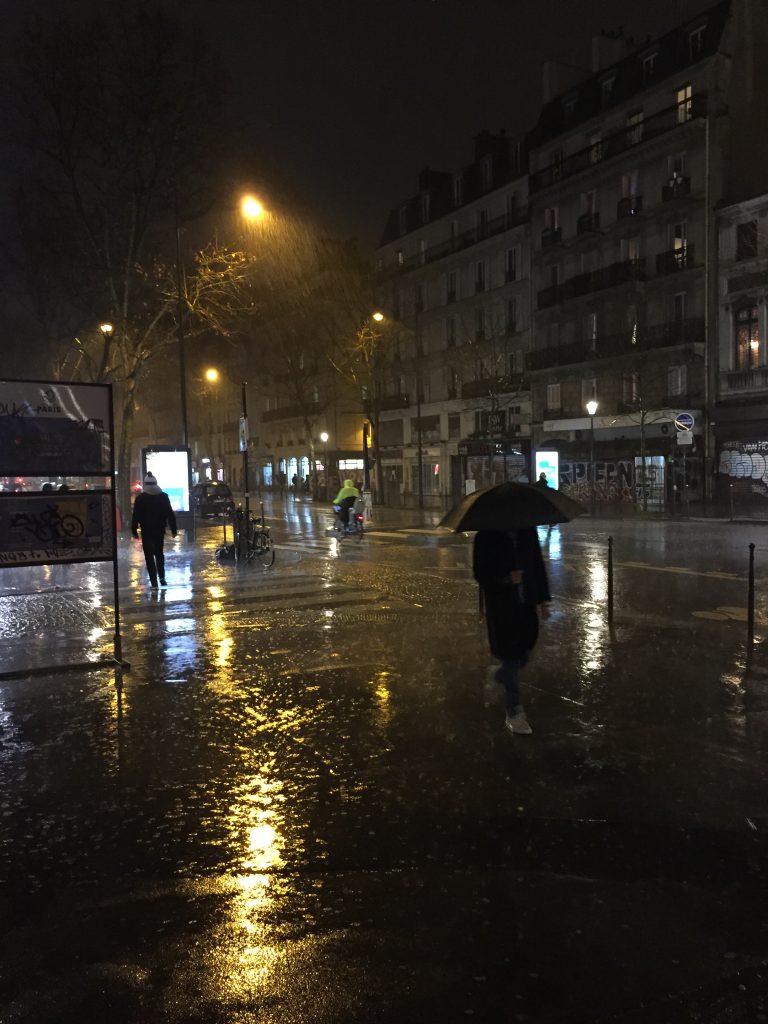
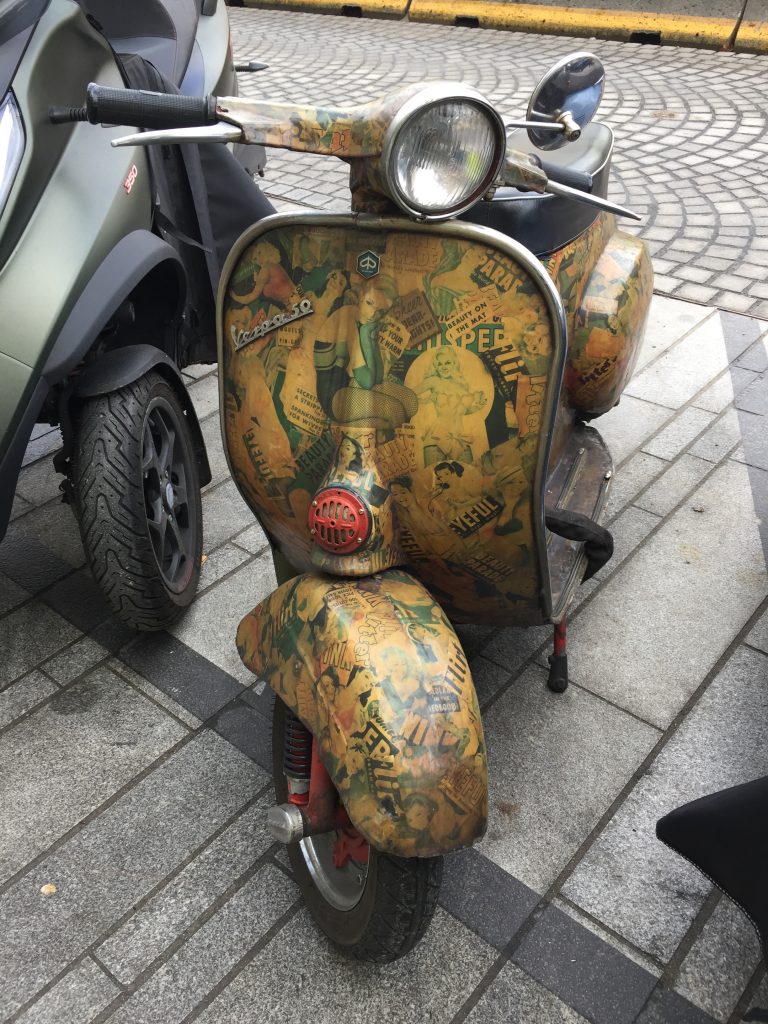

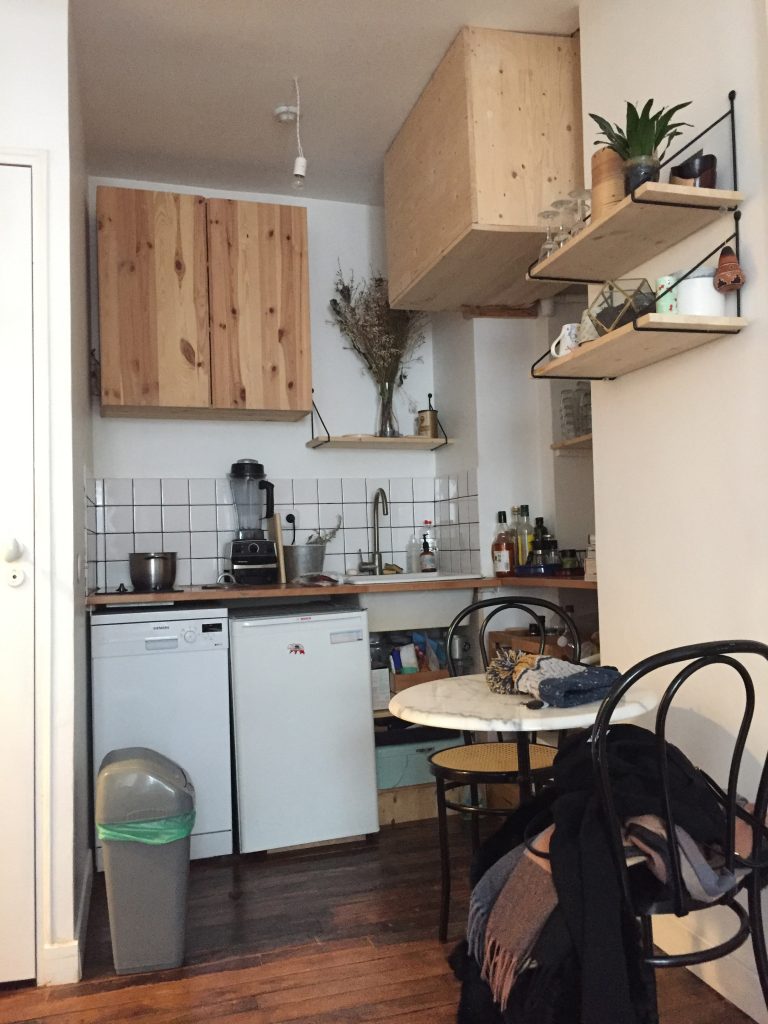
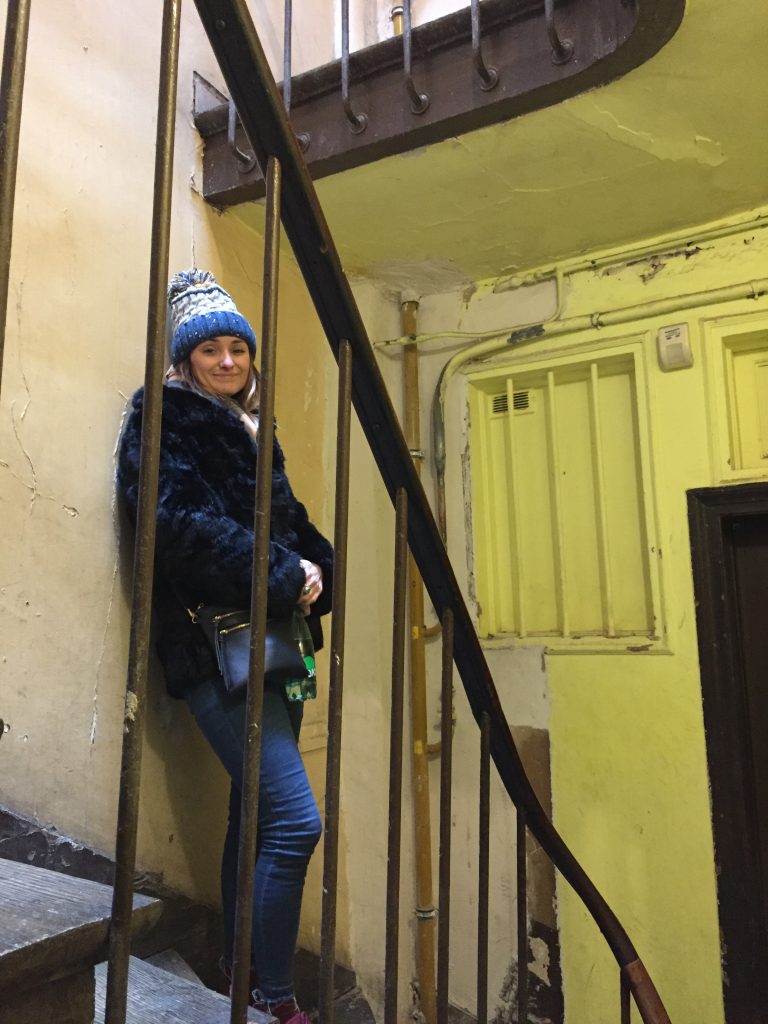


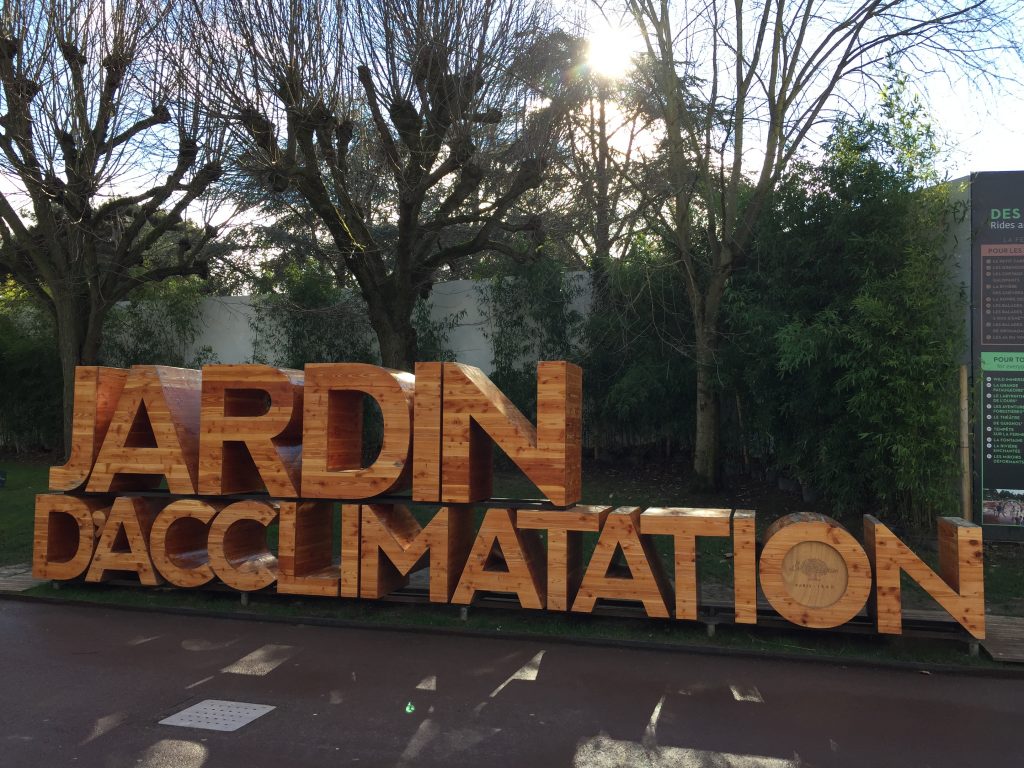

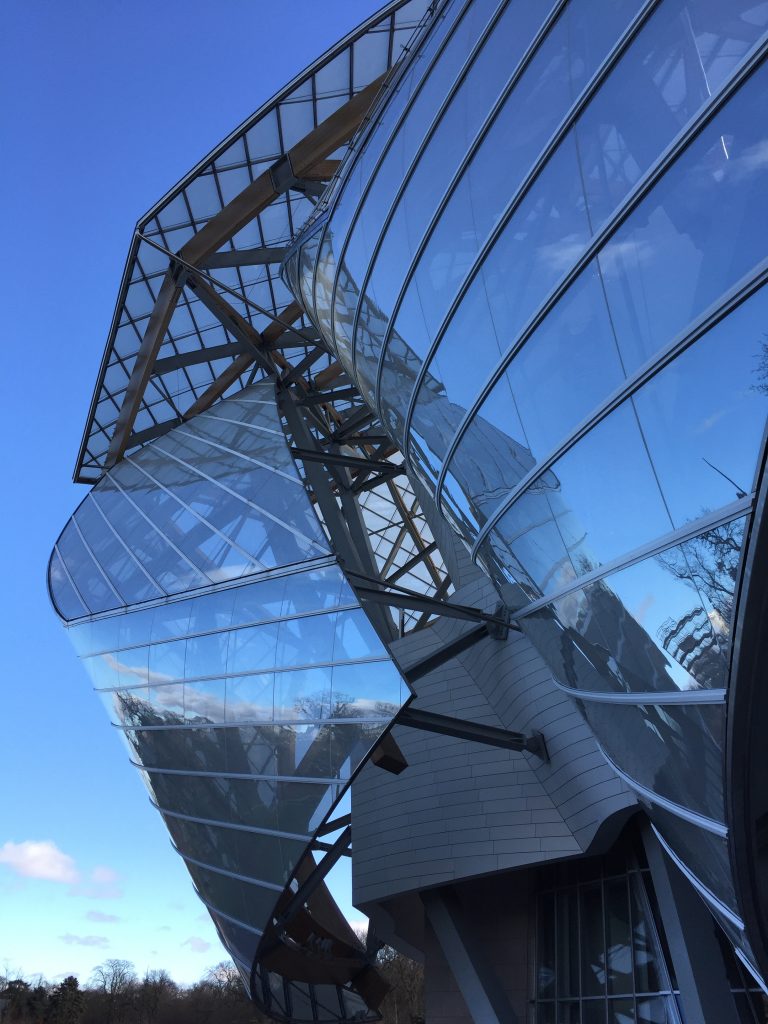










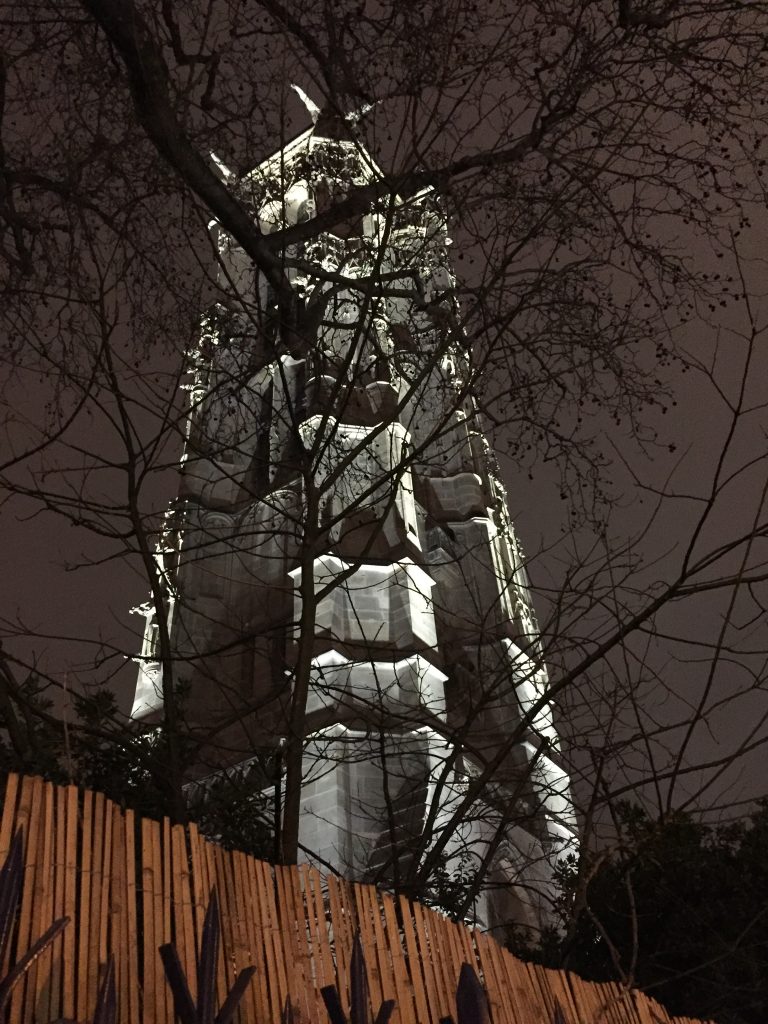











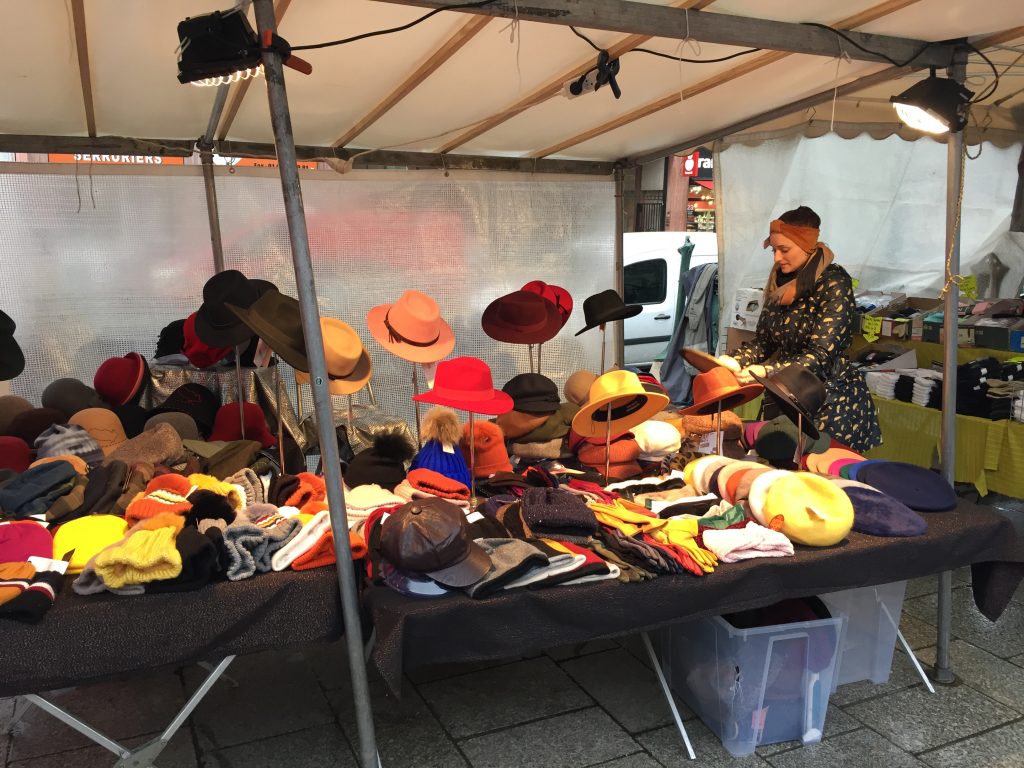
















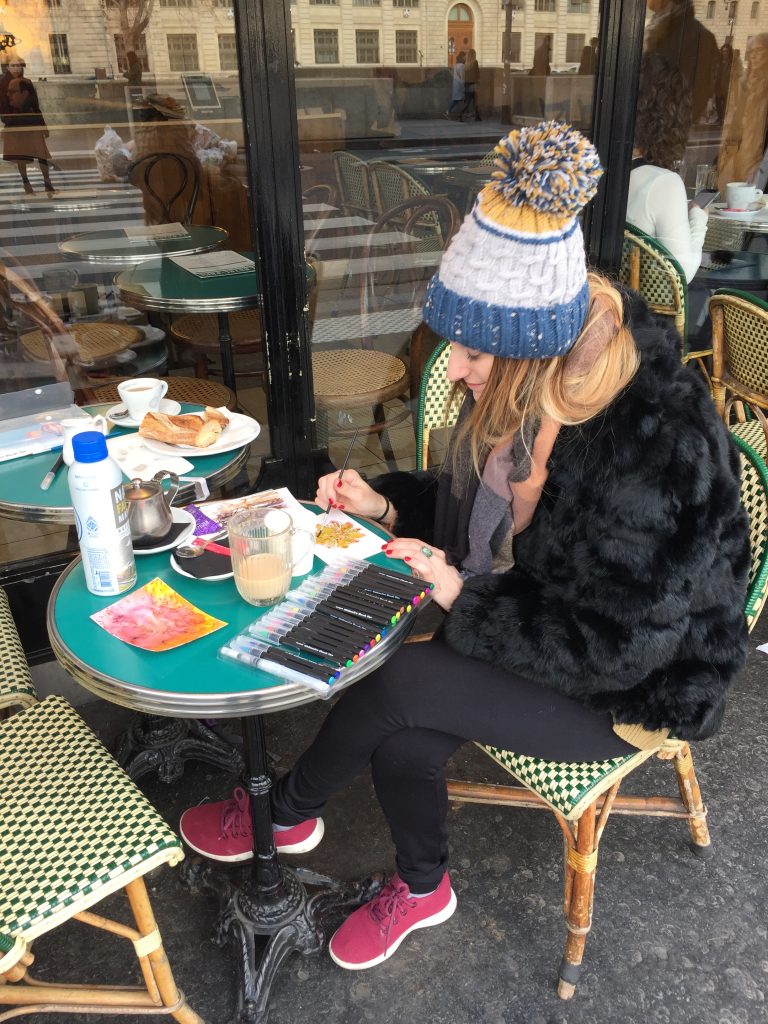


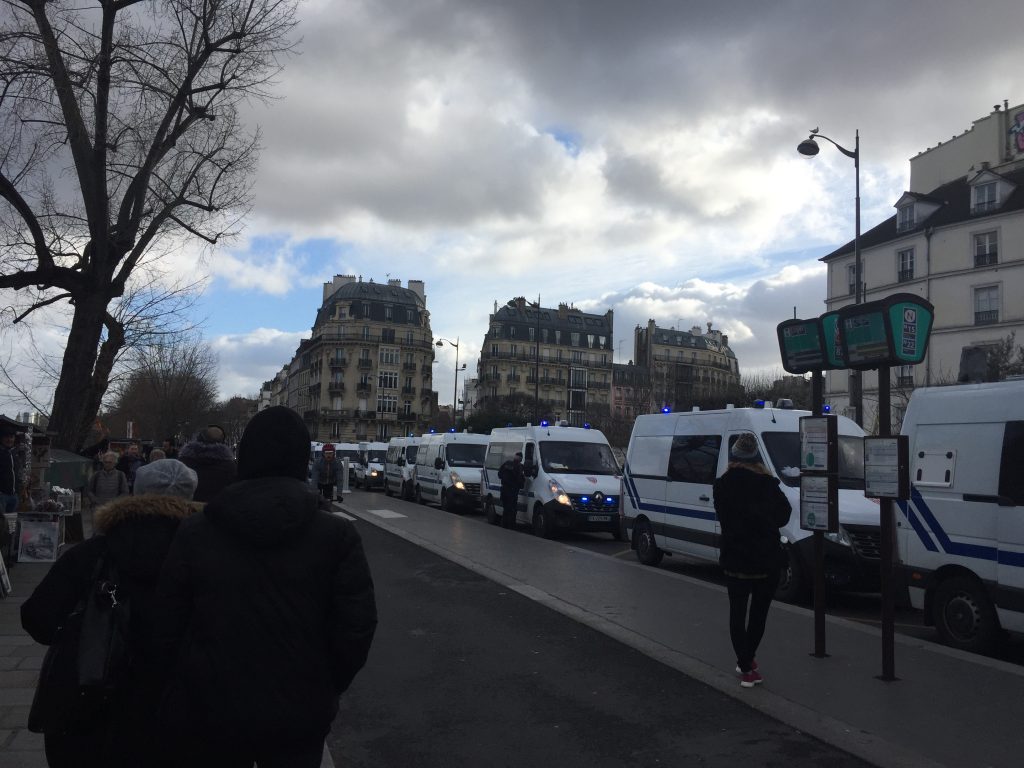

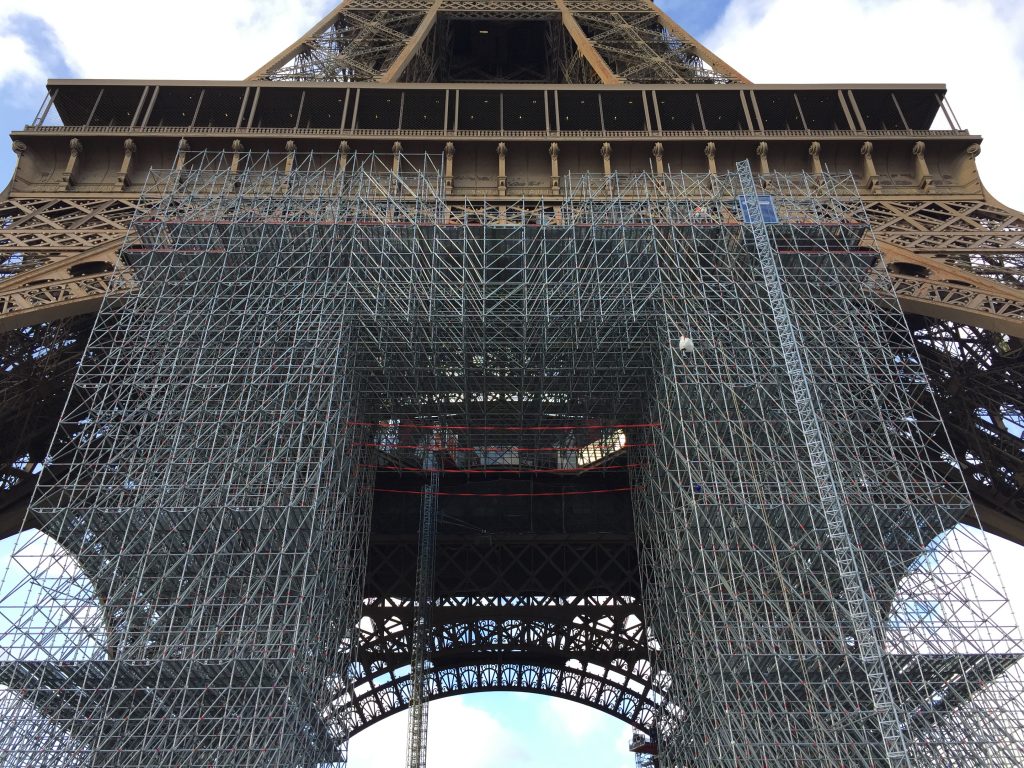




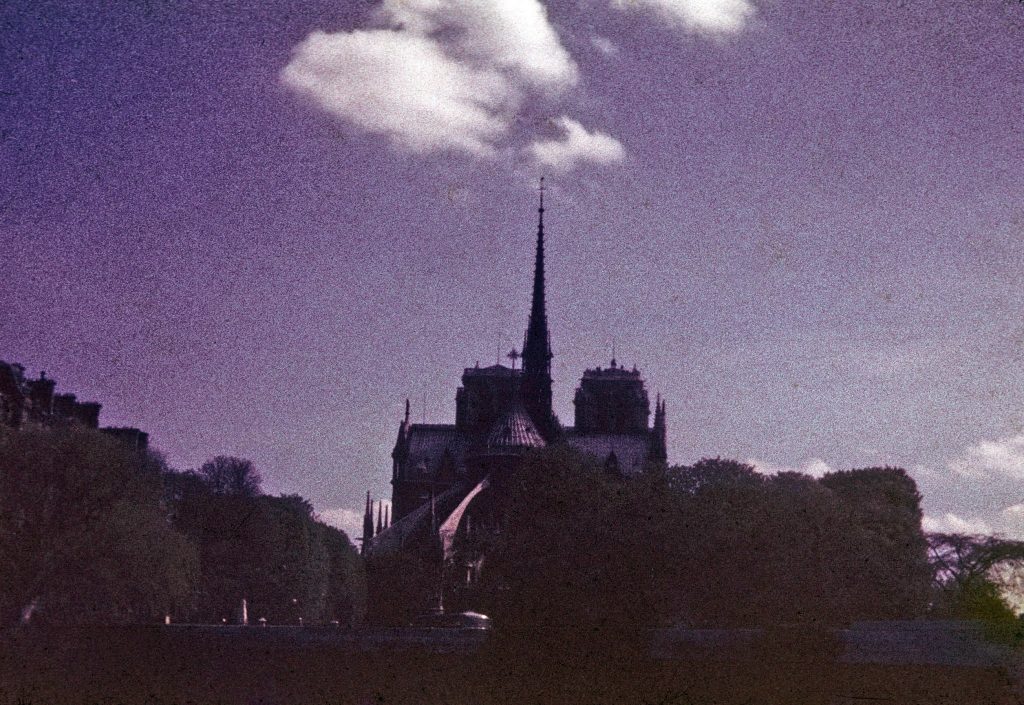

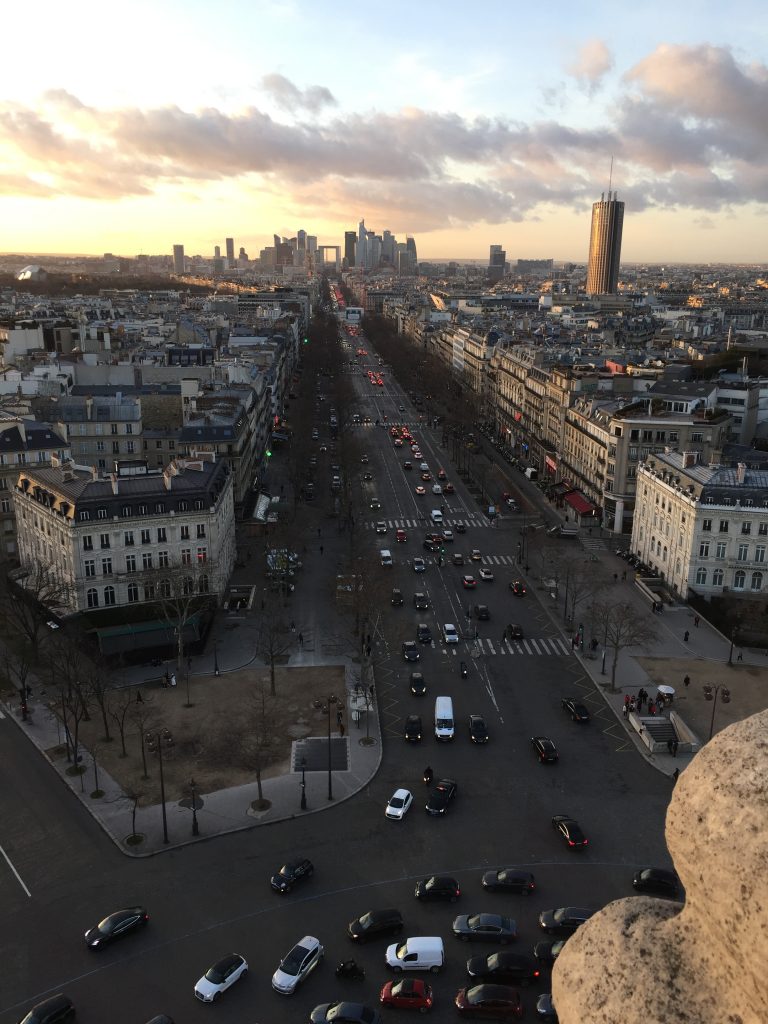










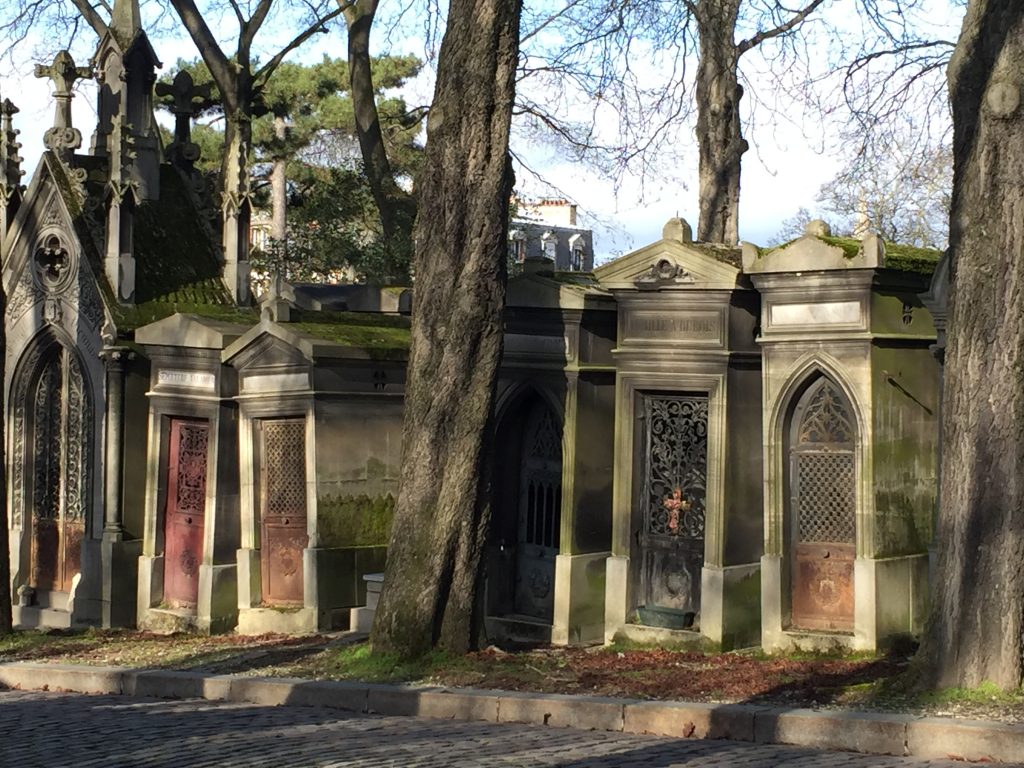



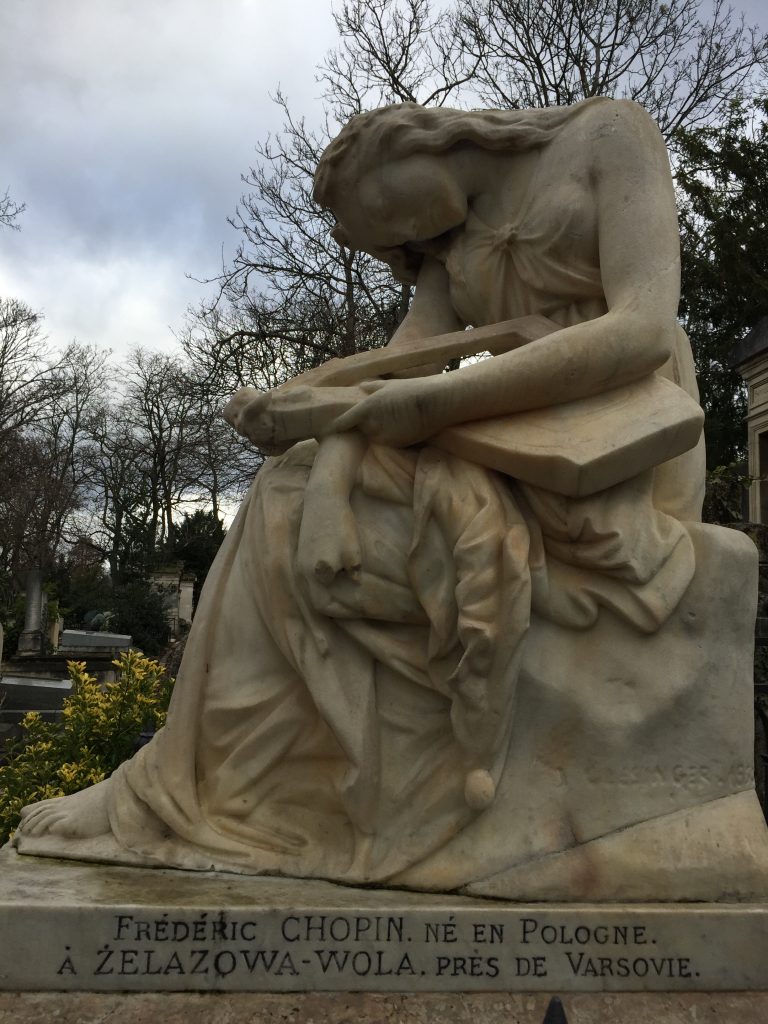
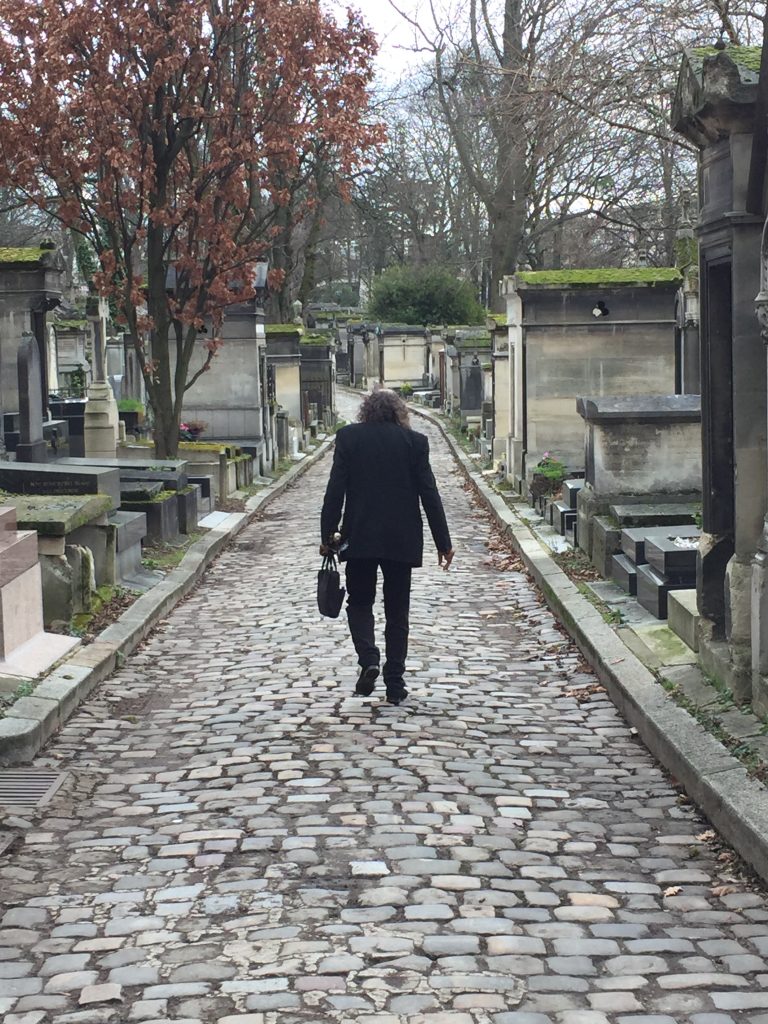





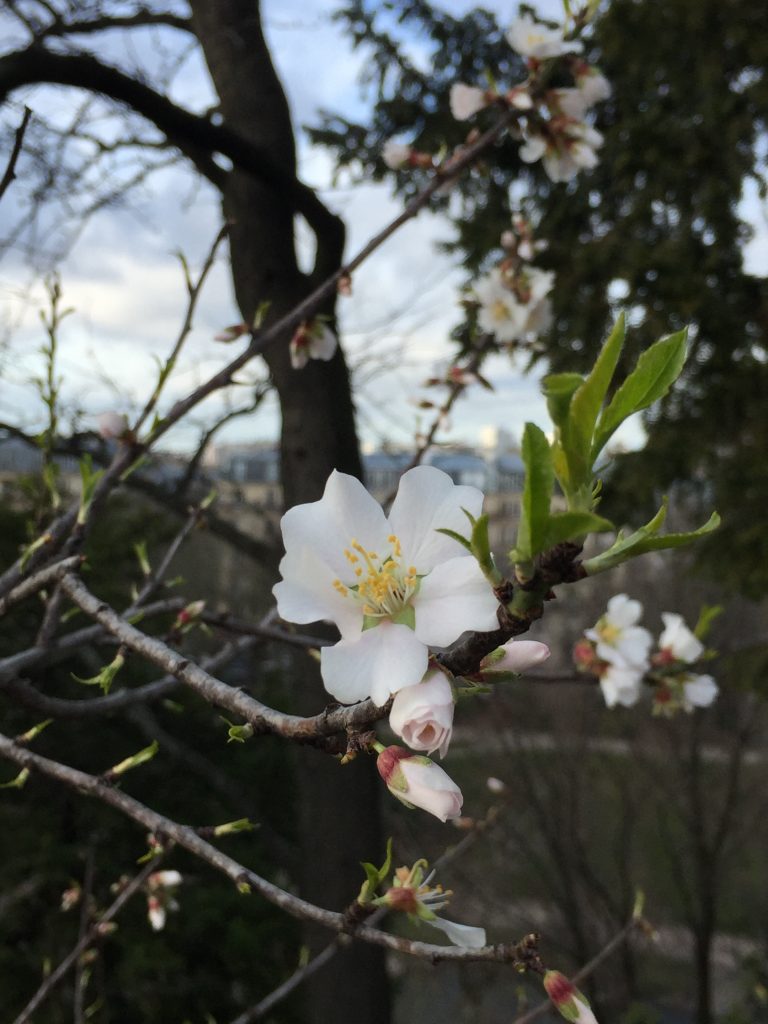



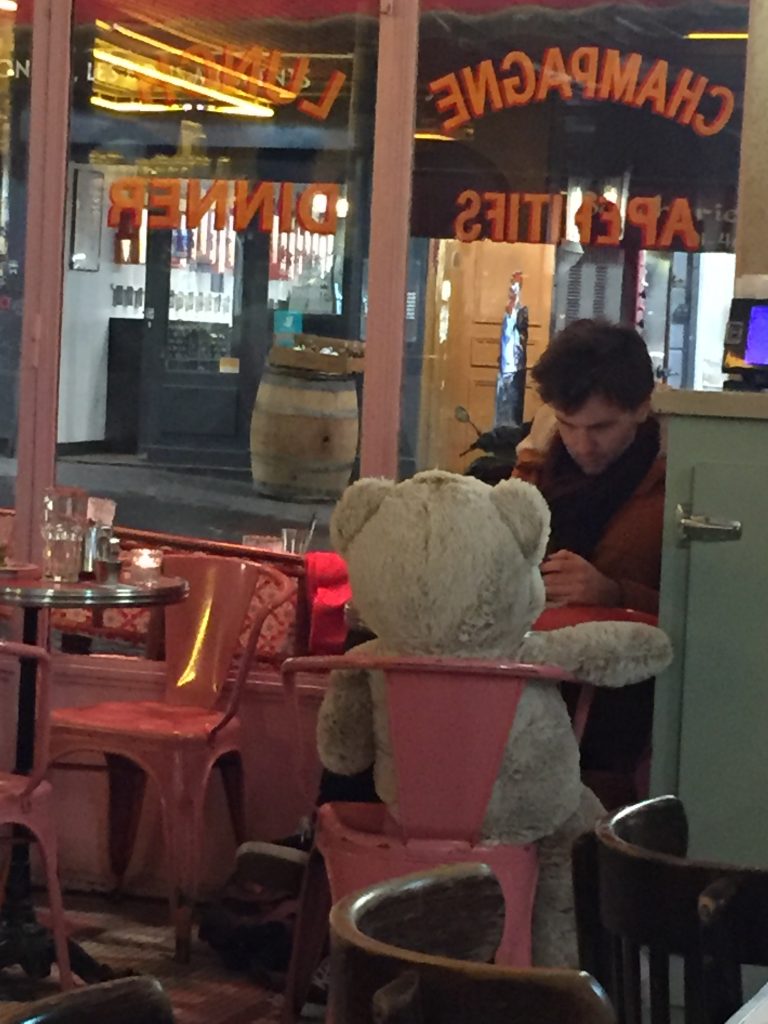















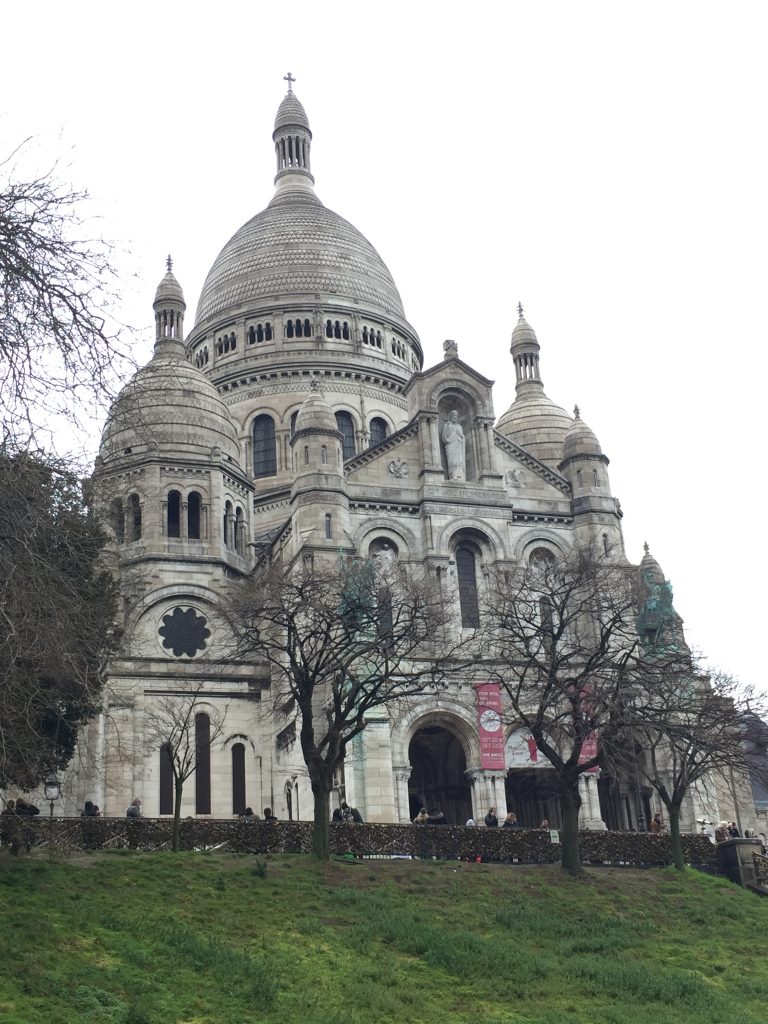


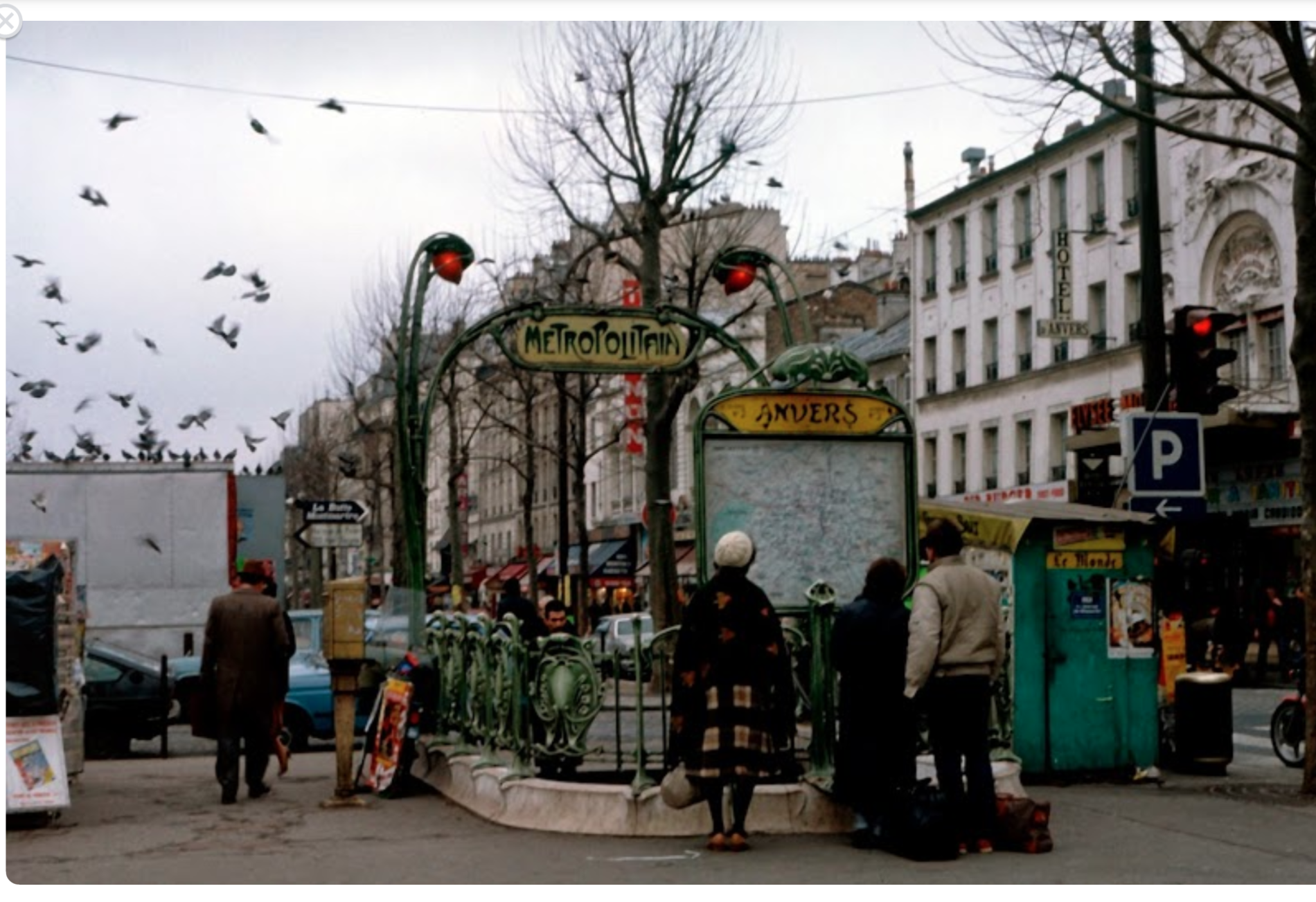



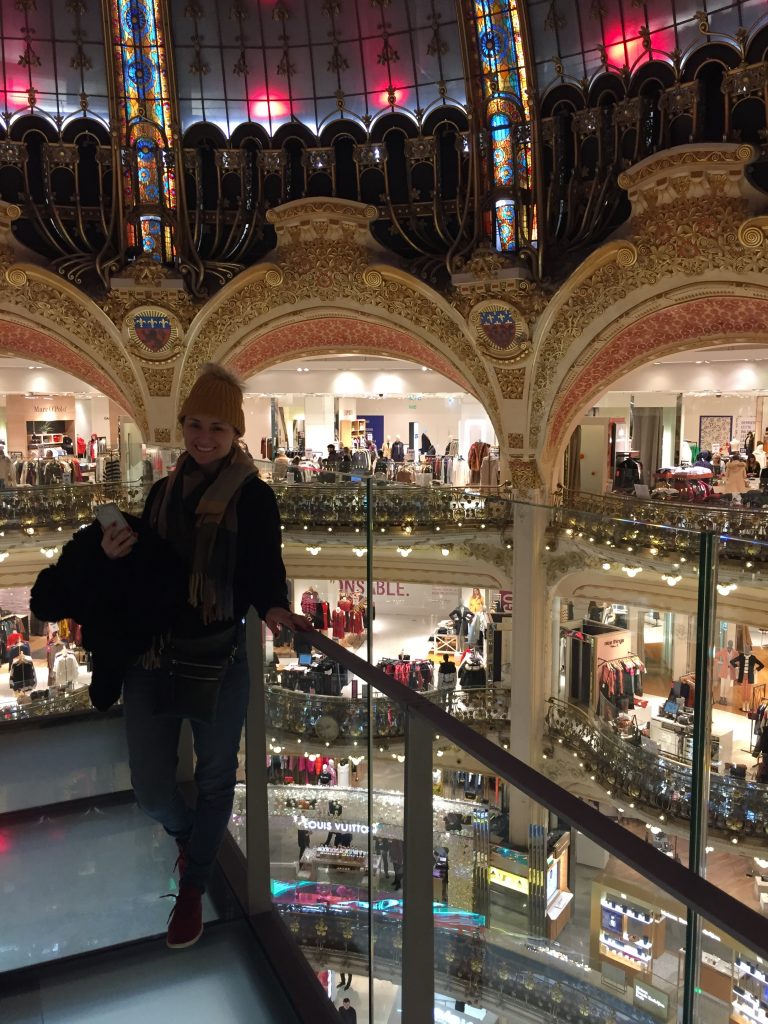

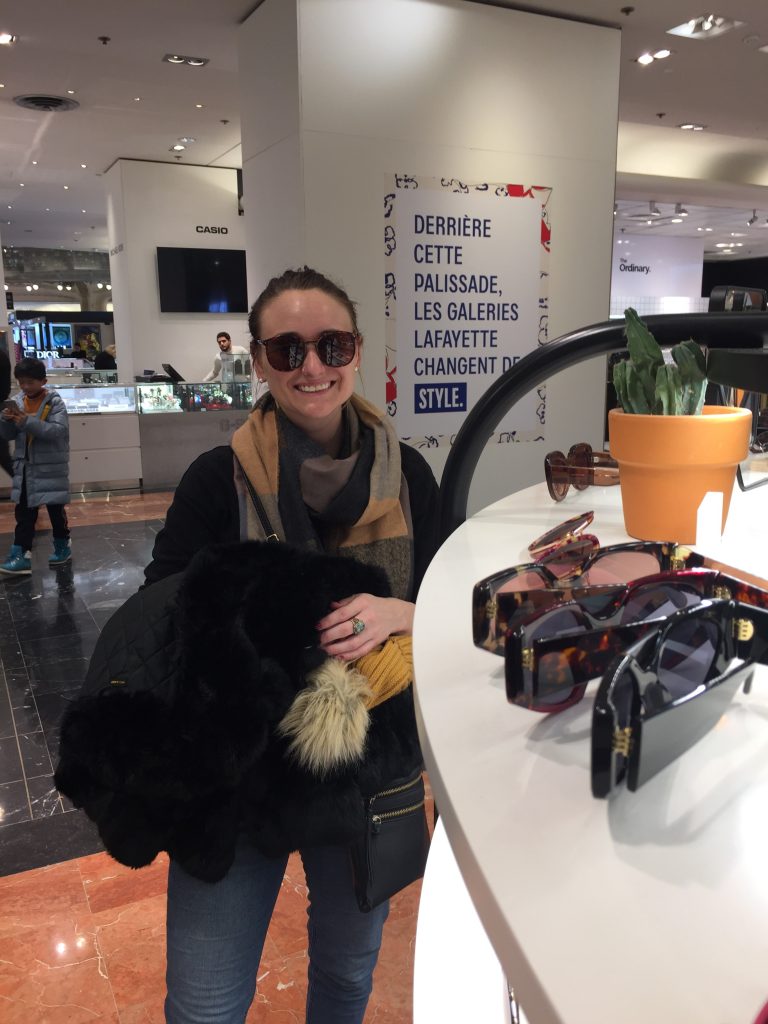


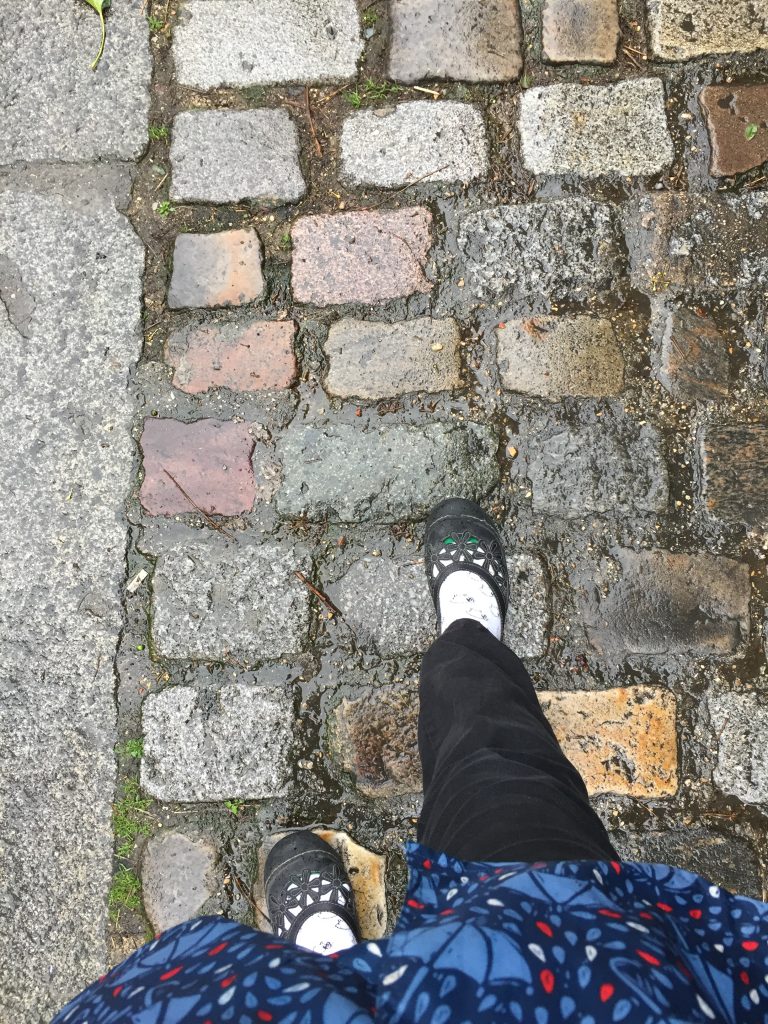
Recent Comments